How to Connect Chromecast to Monitors Without Built-in Speakers?
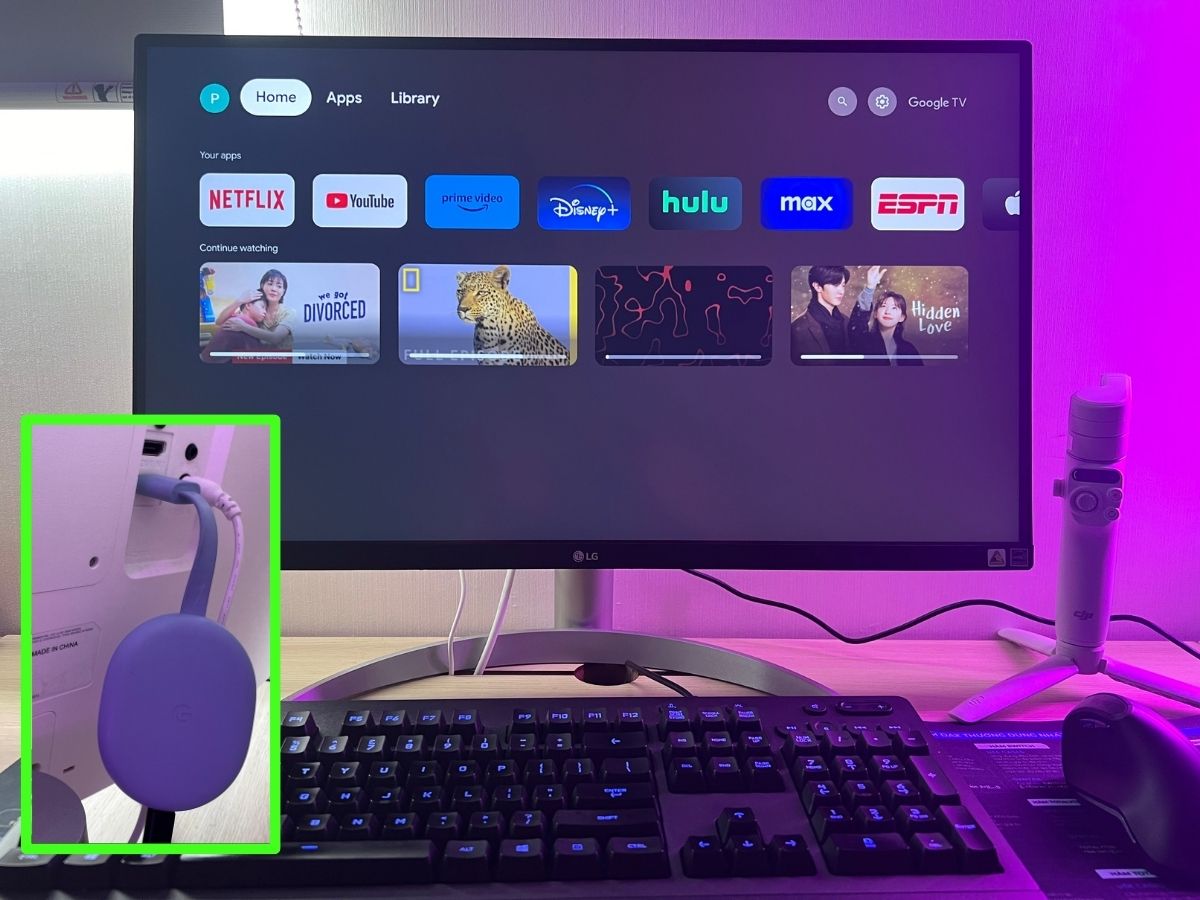
What To Know
- Chromecast can be successfully connected to computer monitors for visual display.
- For monitors without built-in speakers, Chromecast with Google TV can be paired with external Bluetooth speakers to provide sound output.
In this article, I’ll clearly show that Chromecast is fully compatible with computer monitors.
I’ll guide you through connecting Chromecast to a monitor and explain how to get sound output when your monitor lacks built-in speakers.
Additionally, I’ve explored a solution using an HDMI capture card with a laptop and Chromecast, which I will also demonstrate.
Let’s dive in!
Quick Navigation
Try Bluetooth Audio for Chromecast-Monitor Setup
Chromecast with Google TV features a built-in Bluetooth capability, allowing you to connect the Chromecast to any external Bluetooth speaker.
This setup is particularly useful when using Chromecast with a PC monitor that lacks built-in speakers.
In my testing, I connected a Chromecast with Google TV to an LG 27UP600-W monitor, which doesn’t feature built-in speakers.
Here’s how to set it up:
Step 1: Plug the Chromecast into the HDMI input port of your monitor
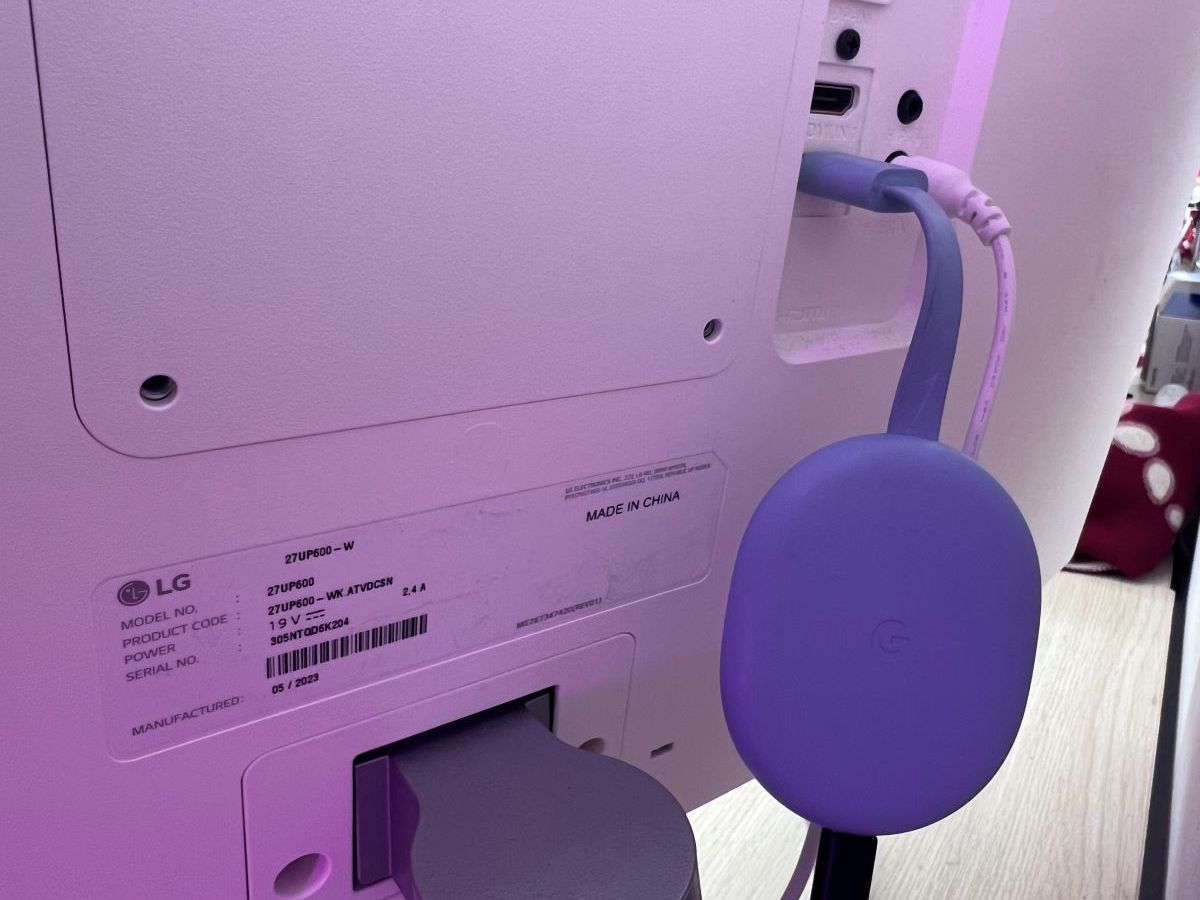
Step 2: On your monitor, switch the input source to HDMI.
Step 3: Once the Chromecast is on, set up the sound output. Go to Settings → Bluetooth → Pair remote or accessories.
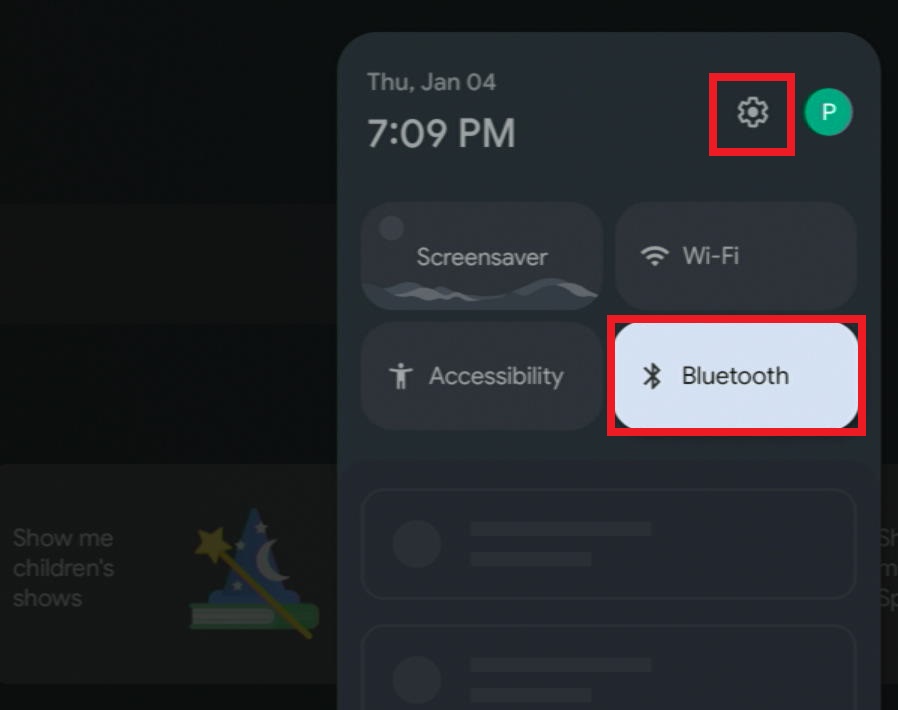
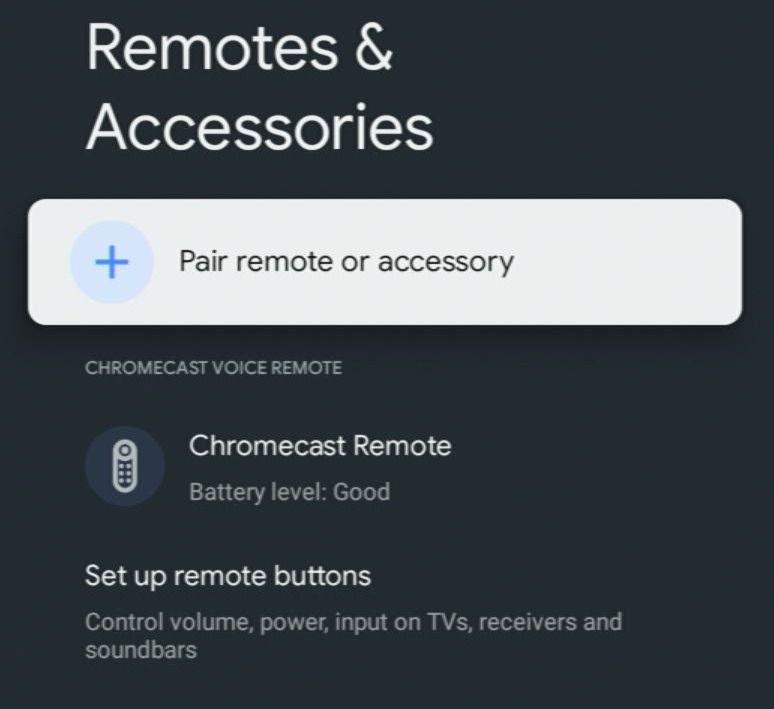
Choose the external Bluetooth speakers you wish to connect.
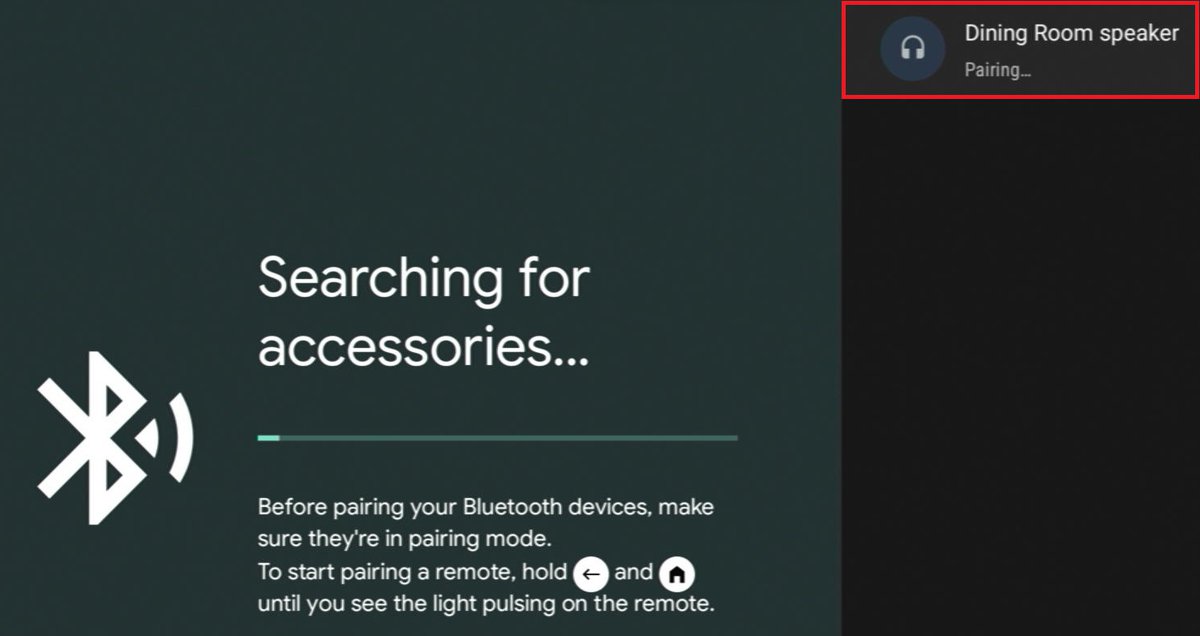
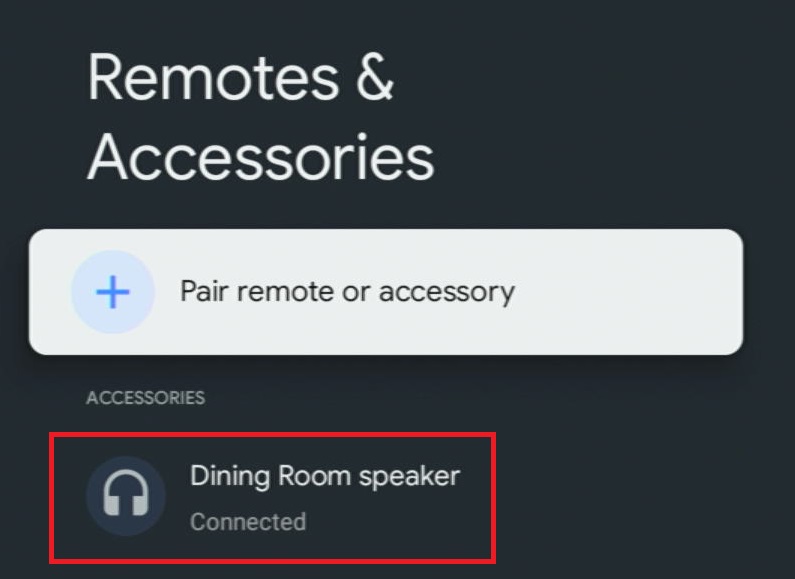
Bonus: Using an HDMI Audio Splitter with Monitors Lacking Built-in Speakers
Not all computer monitors come with built-in speakers, and using Chromecast with such monitors can result in videos playing without sound.
To resolve this, we recommend using an HDMI audio extractor.
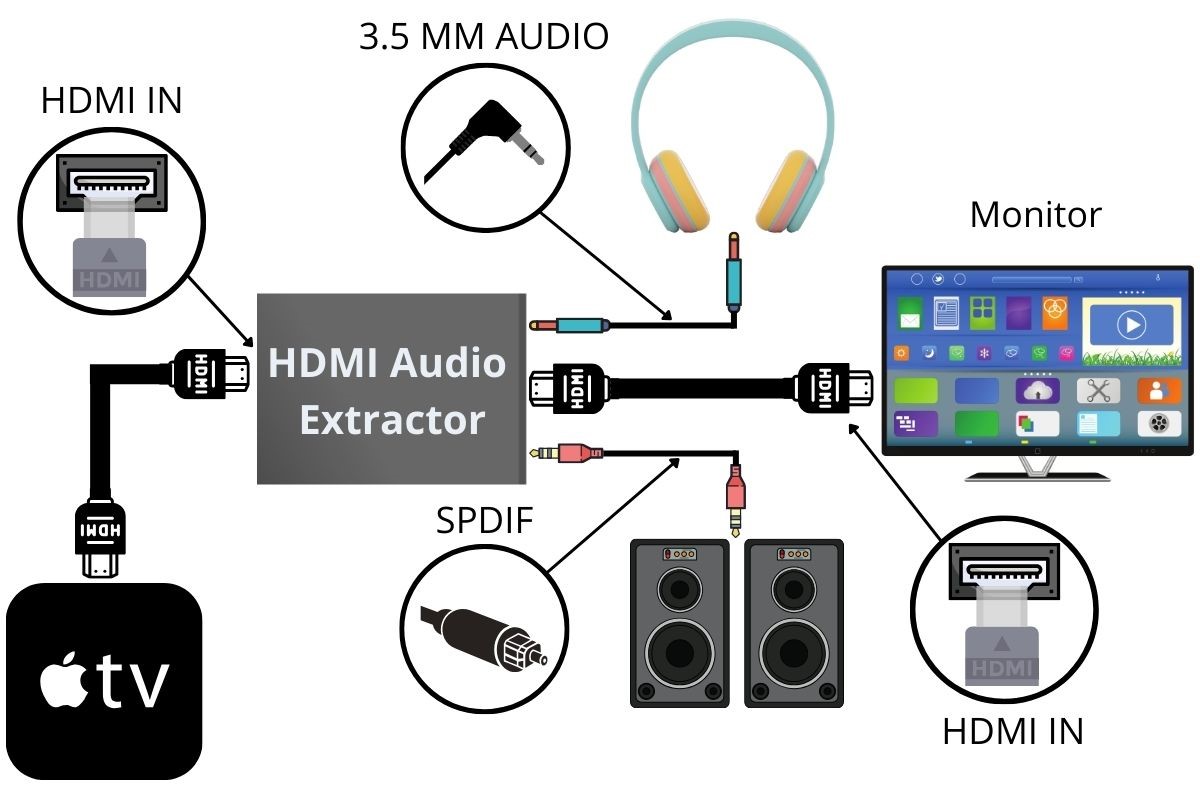
- Please Note: This unit will only pass Dolby Digital/DTS audio formats, it will NOT decode these...
- 𝐀𝐔𝐃𝐈𝐎 𝐄𝐗𝐓𝐑𝐀𝐂𝐓𝐈𝐎𝐍 - Extract the digital HDMI audio...
- 𝟒𝐊 𝐔𝐥𝐭𝐫𝐚 𝐇𝐃 𝐰𝐢𝐭𝐡 𝐇𝐃𝐌𝐈 𝟐.𝟎 |...
(Paid Link.)
This HDMI audio extractor enables you to route audio to an external audio system, such as speakers or a soundbar, without affecting the HDMI video quality.
The setup is straightforward: plug your Chromecast into the audio extractor, then connect the extractor to your monitor using another HDMI cable.
The audio extractor is equipped with ports that let you transmit audio to external audio equipment.
How to Connect Chromecast to Monitor/TV without HDMI
Connecting a Chromecast to a monitor without an HDMI port, like my old Samsung monitor, is straightforward.
The key is to find the right adapter that is compatible with your monitor or TV’s existing port. Below, I’ll provide a list of adapters for this purpose.
In my situation, as the old Samsung monitor utilizes a VGA cable, an HDMI to VGA adapter was necessary to establish the connection.
Here’s what you’ll need to prepare before starting the setup process:
- Use an HDMI splitter in this setup, as the splitter provides the necessary HDMI ports. Since both the Chromecast and the adapter are designed with HDMI connectors, the splitter acts as an HDMI port, allowing both devices to connect to my Samsung monitor.
- A VGA cable
- An HDMI to VGA adapter
Now, let me guide you through the setup steps:
Step 1: Connect the Chromecast to the HDMI input port on the HDMI splitter.
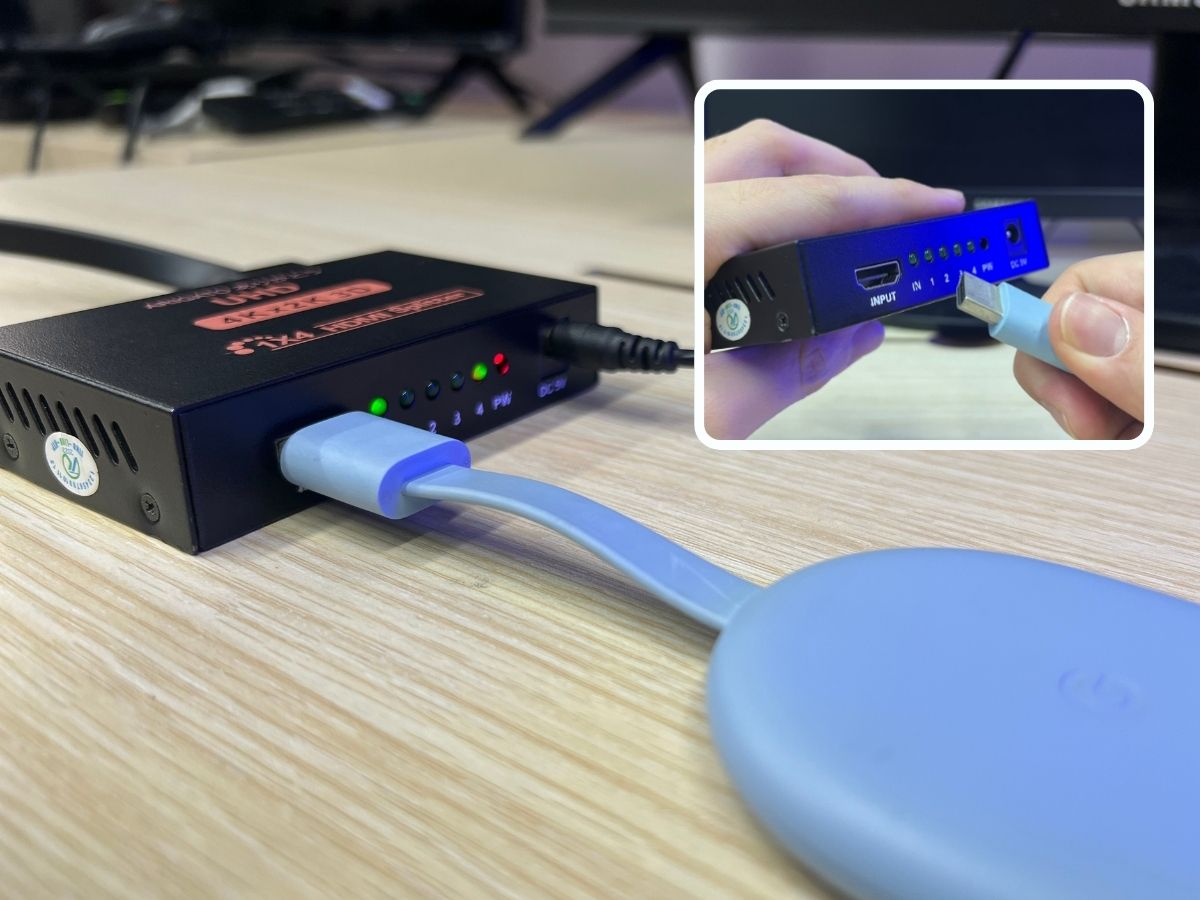
Step 2: Connect the HDMI cable provided with the HDMI-to-VGA adapter to the HDMI output on the HDMI splitter.
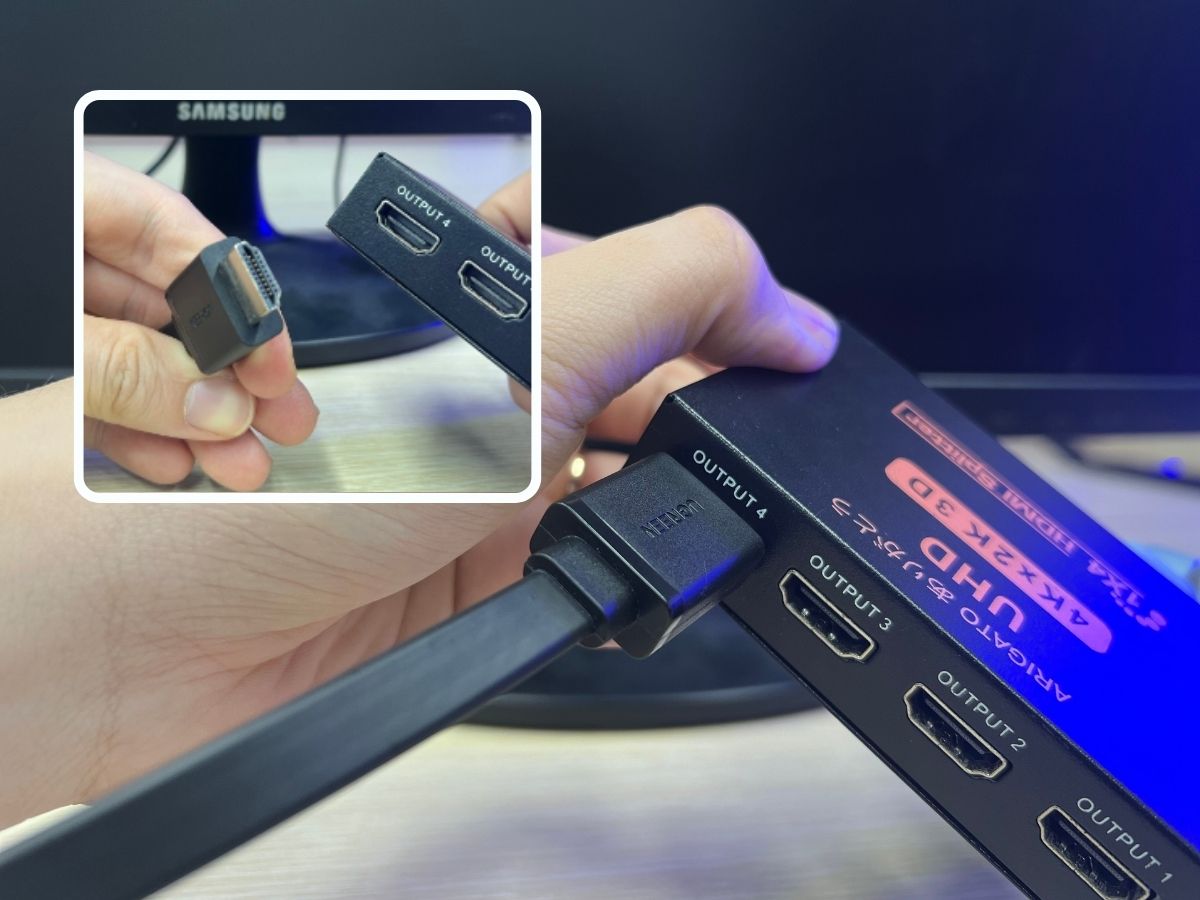
Step 3: Connect one end of the VGA cable to the VGA port on the HDMI-to-VGA adapter. Ensure the other end of the VGA cable is plugged into the monitor’s VGA port.
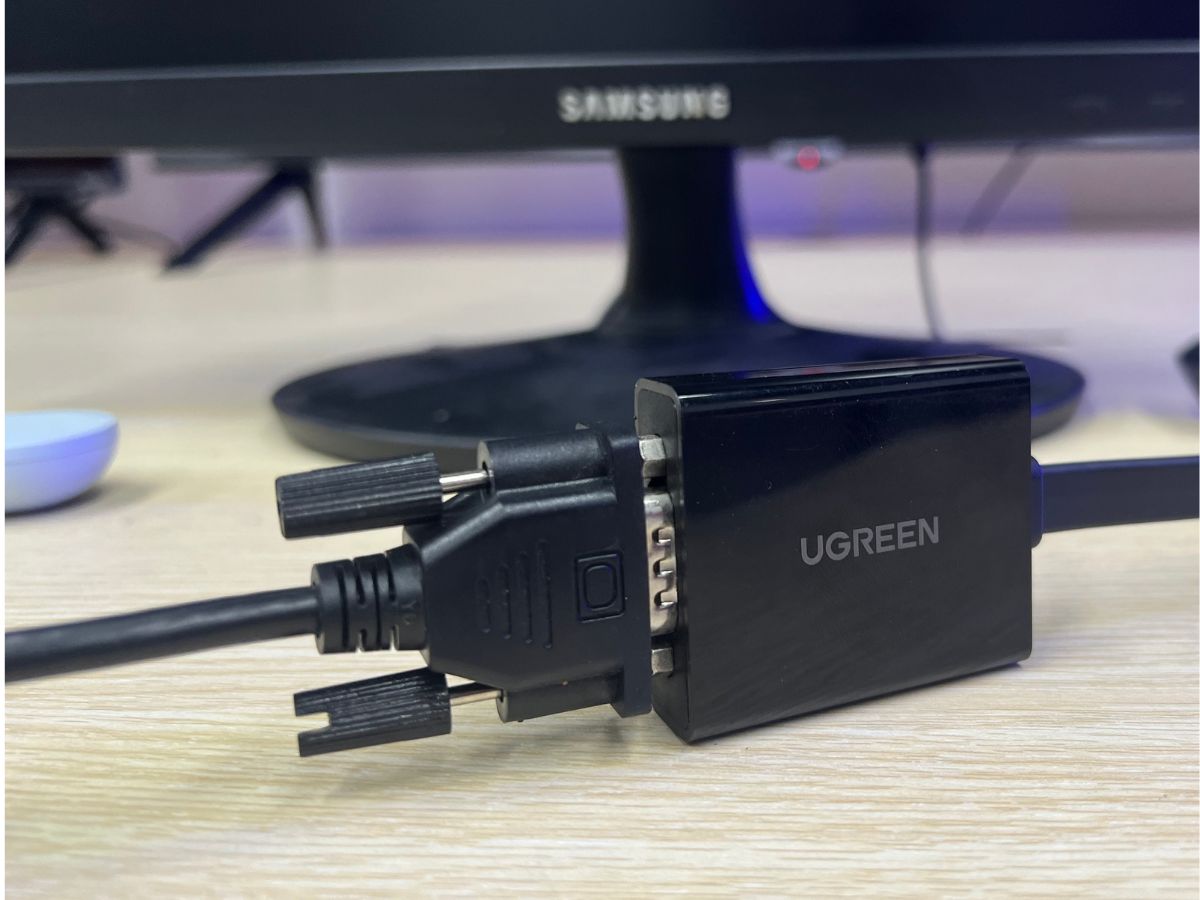

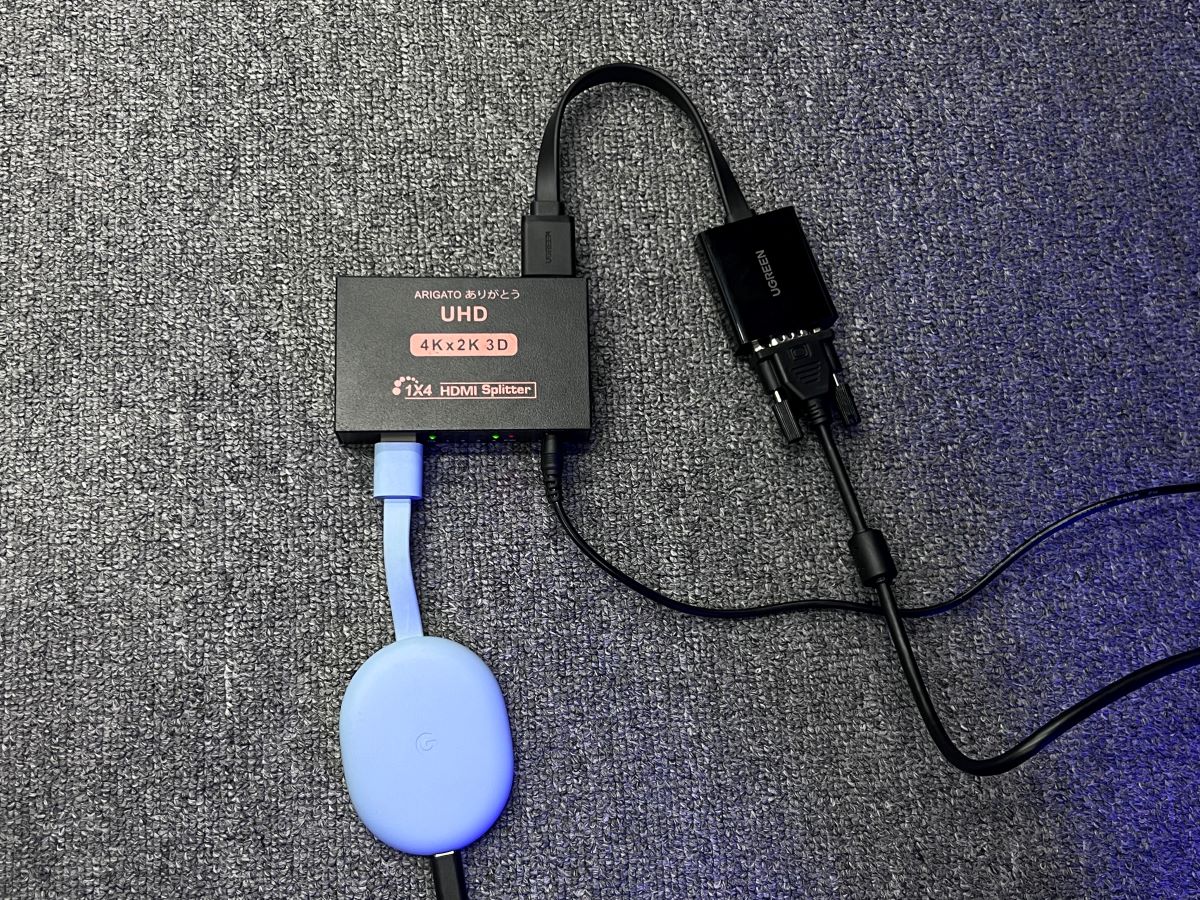
Step 4: Power up both the Chromecast and the HDMI splitter to activate the setup.
Once these steps are completed, your monitor should display the content from the Chromecast.

To get sound out, I connected the Chromecast to my LG soundbar via Bluetooth connection.
How to Connect Chromecast to a Laptop or PC
Many users aren’t aware that it’s possible to connect Chromecast to a computer or laptop, even if the PC only has an HDMI output.
The trick is to use the USB port, converting it into an HDMI input port with the help of an HDMI capture card.
Let me show you how:
You’ll need an HDMI capture card, similar to the one I’m using
- 【4K Upgraded Version High Speed & Full HD】The Audio Capture Card is up to 4K@60HZ High...
- 【Real-time Preview & Screen Sharing】The Audio Video Capture Card can capture both HDMI video &...
- 【Plug and Play & Easy to Use】As a portable plug and play streaming capture card, it does not...
(Paid Link.)
Once you have your capture card, let’s move on to the setup process.
Step 1: Download and install the OBS software on your computer
Step 2: Plug the capture card into your PC’s USB port.
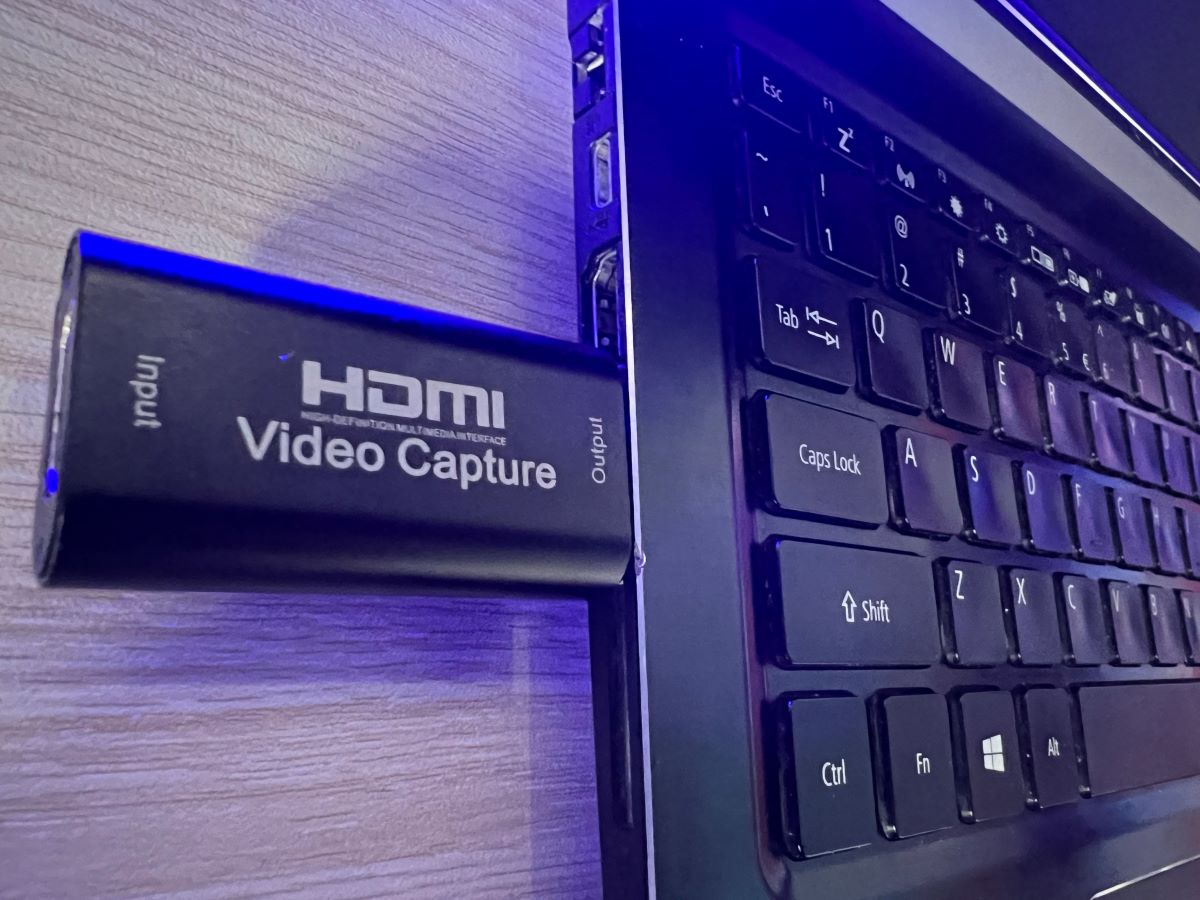
Step 3: Connect the Chromecast to the HDMI port of the capture card.
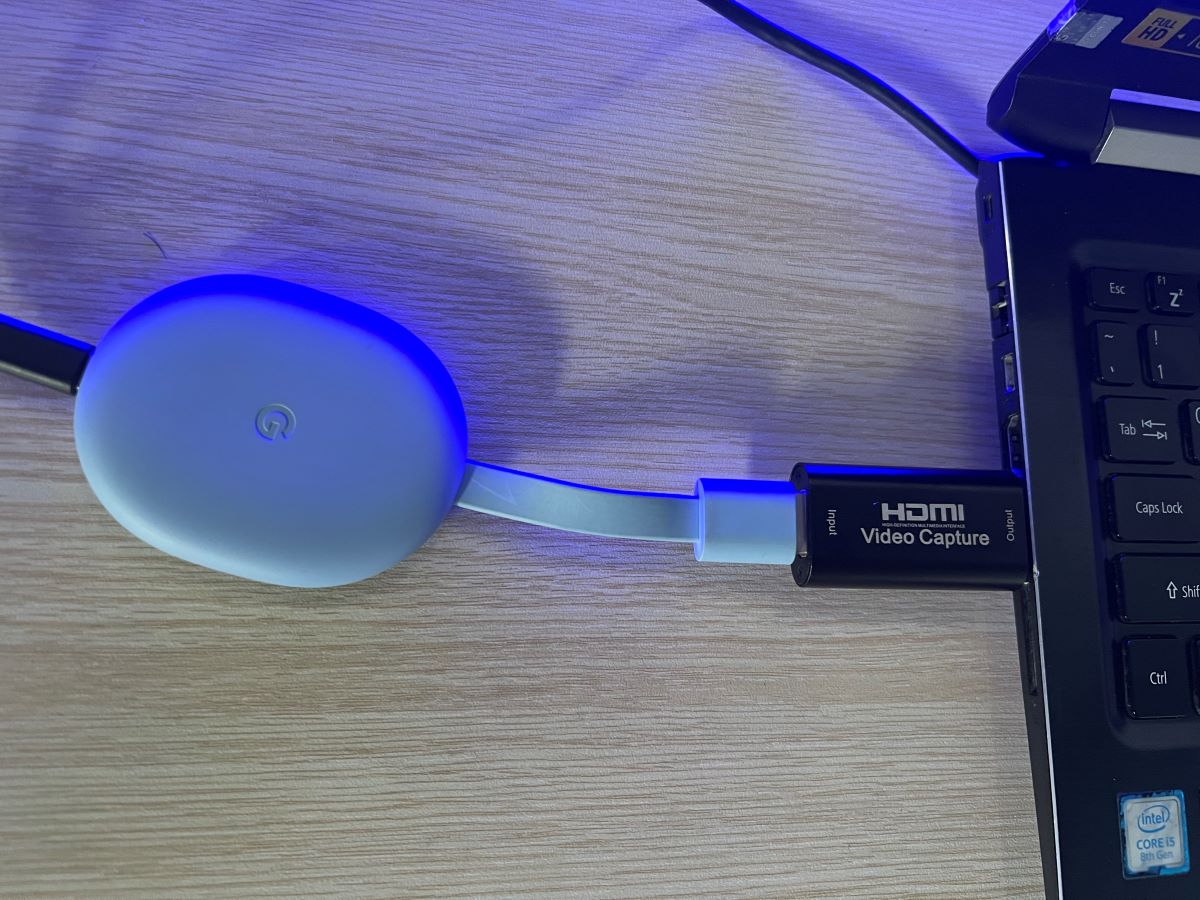
Step 4: Open OBS. The interface should resemble the image below.
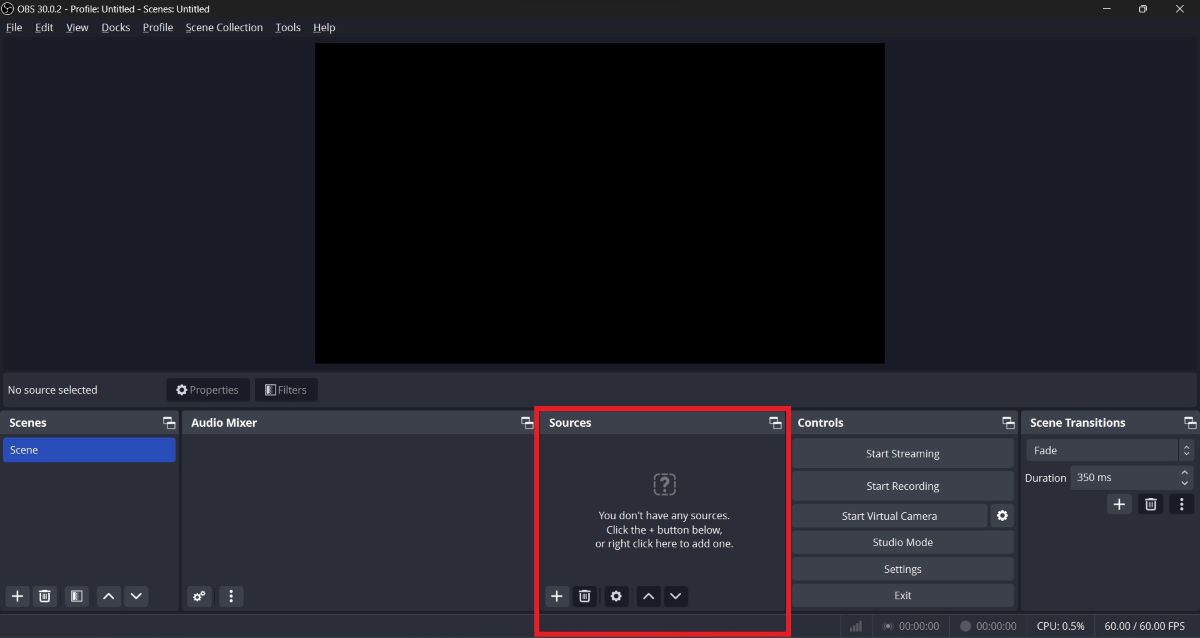
In OBS, go to the Sources tab and click the + icon → Video Capture Device
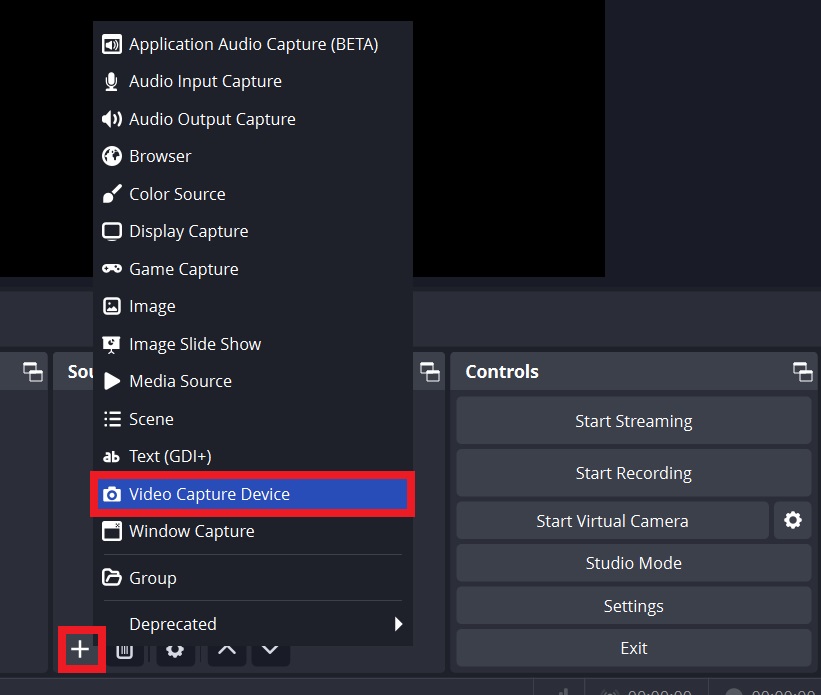
You can name this source as you wish and click OK.
Step 5: In the new window that appears, under Device select USB Video to display the Chromecast’s image on your computer screen. Click OK to complete the setup.
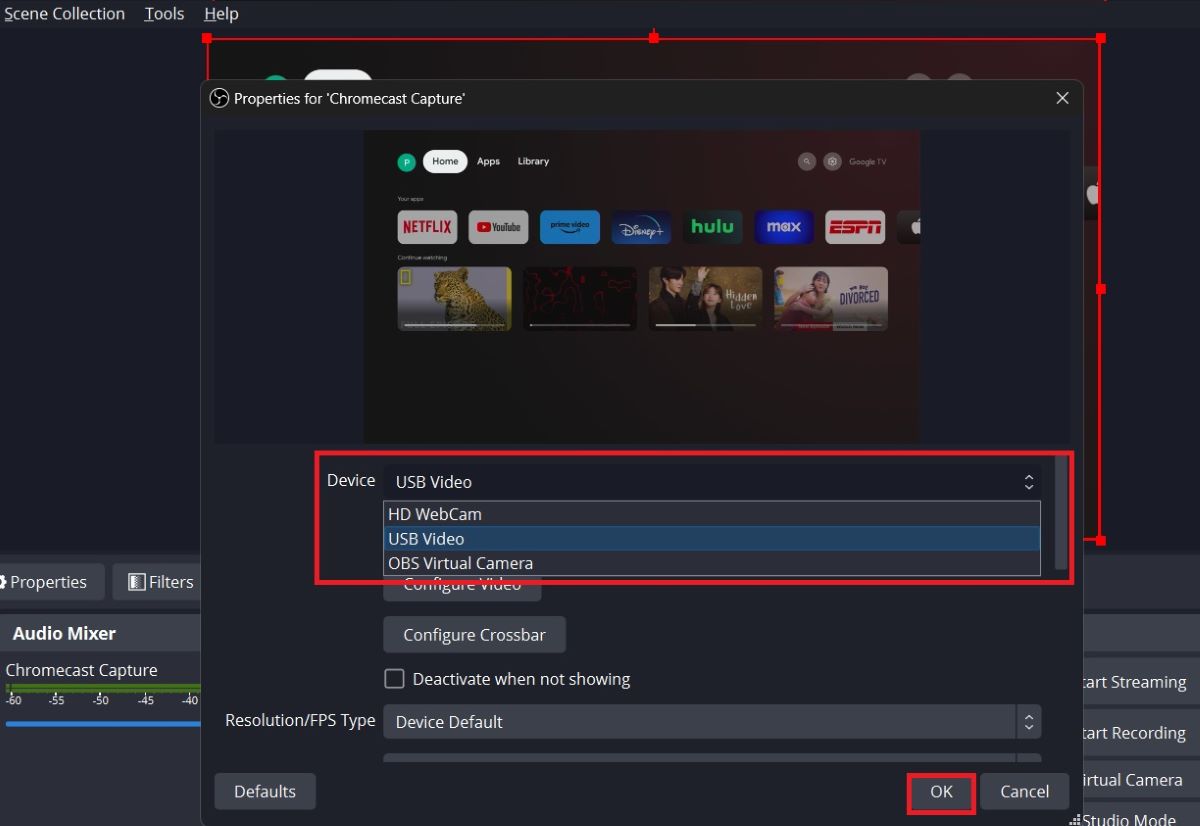
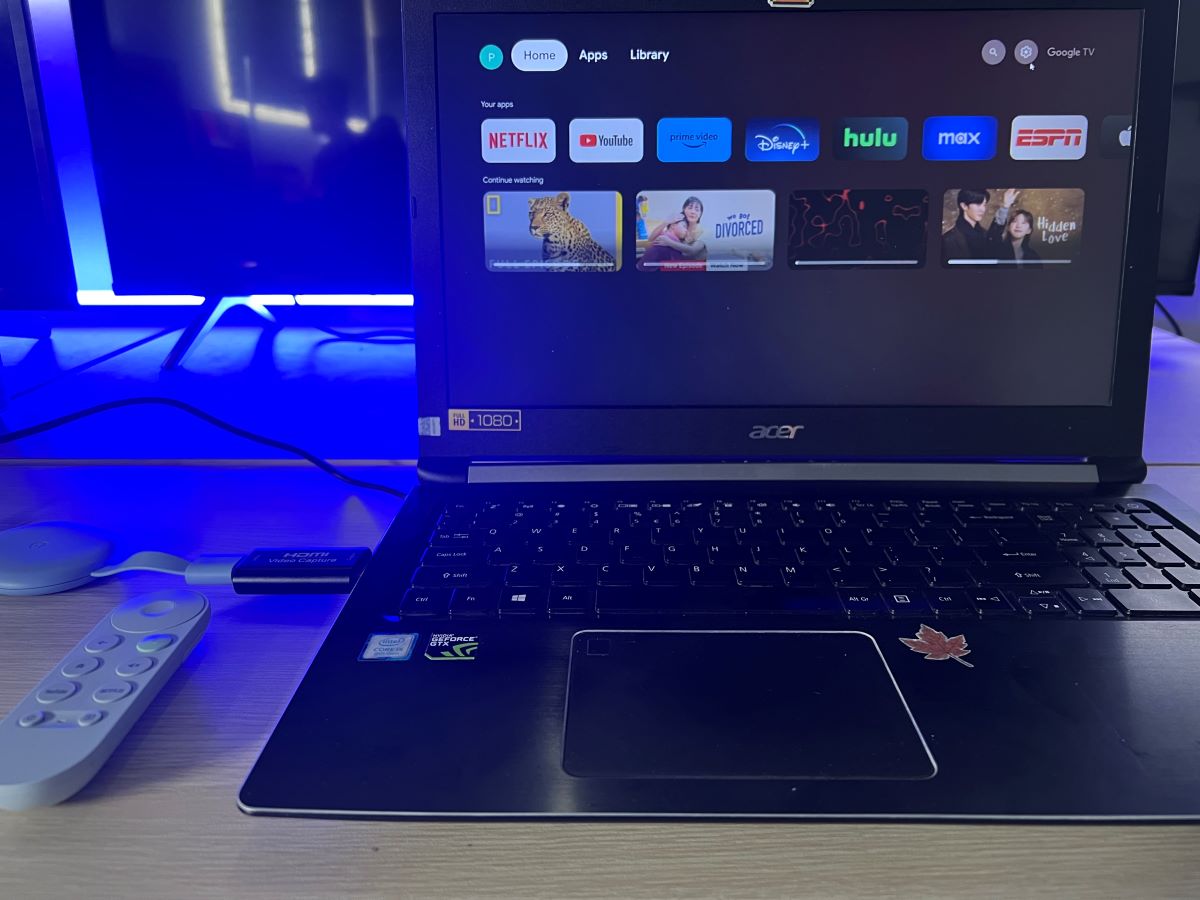
To configure the sound output in OBS, follow these steps: go to Settings → Audio → Advanced → select the speaker that you are connecting or the built-in speaker from the laptop then Click OK to complete the setup and save your changes.
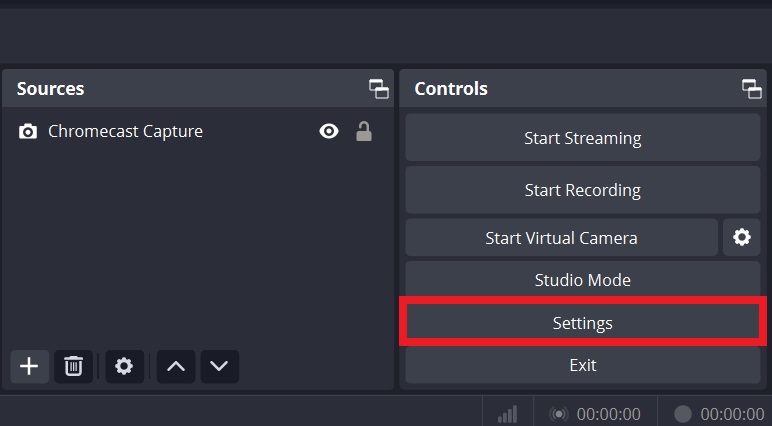
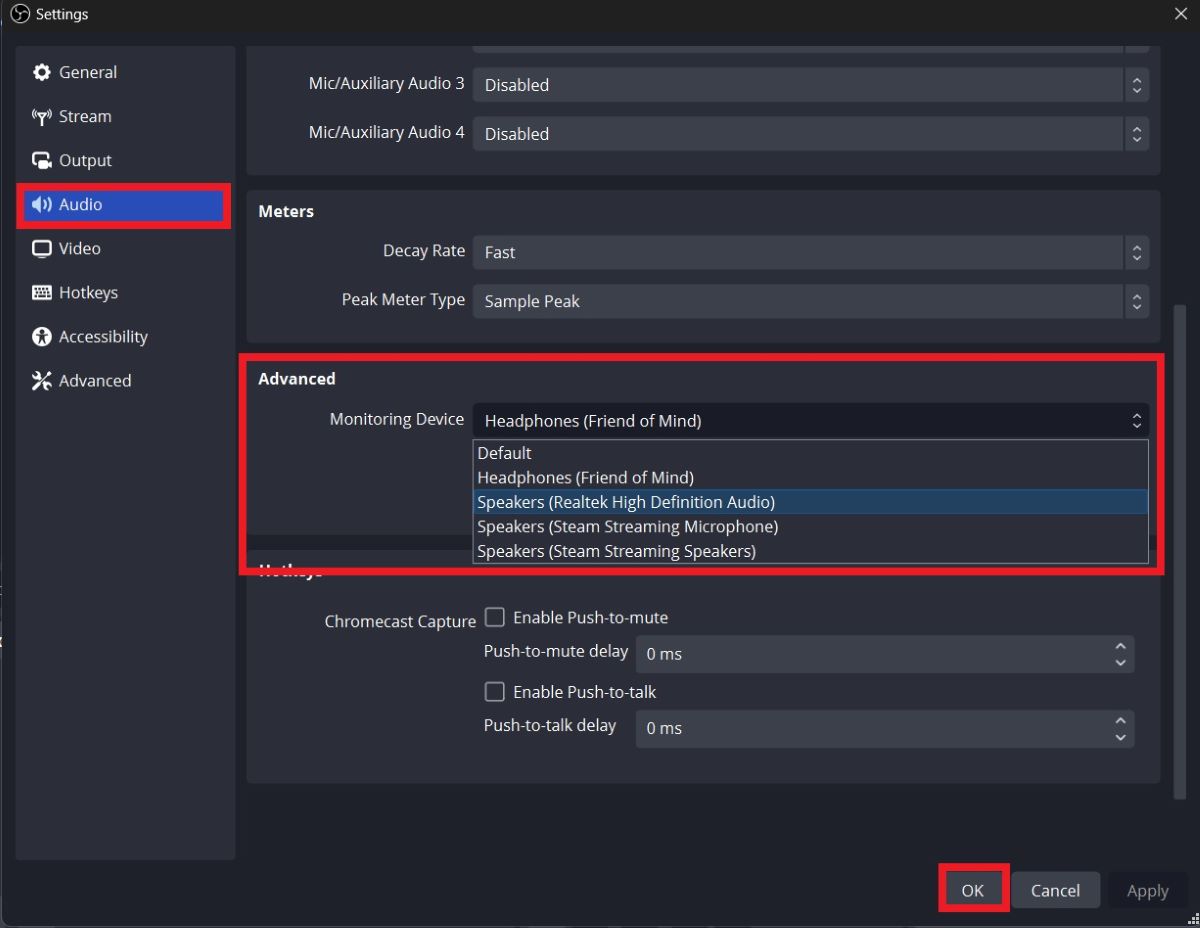
My Experience using Chromecast with PC Monitor
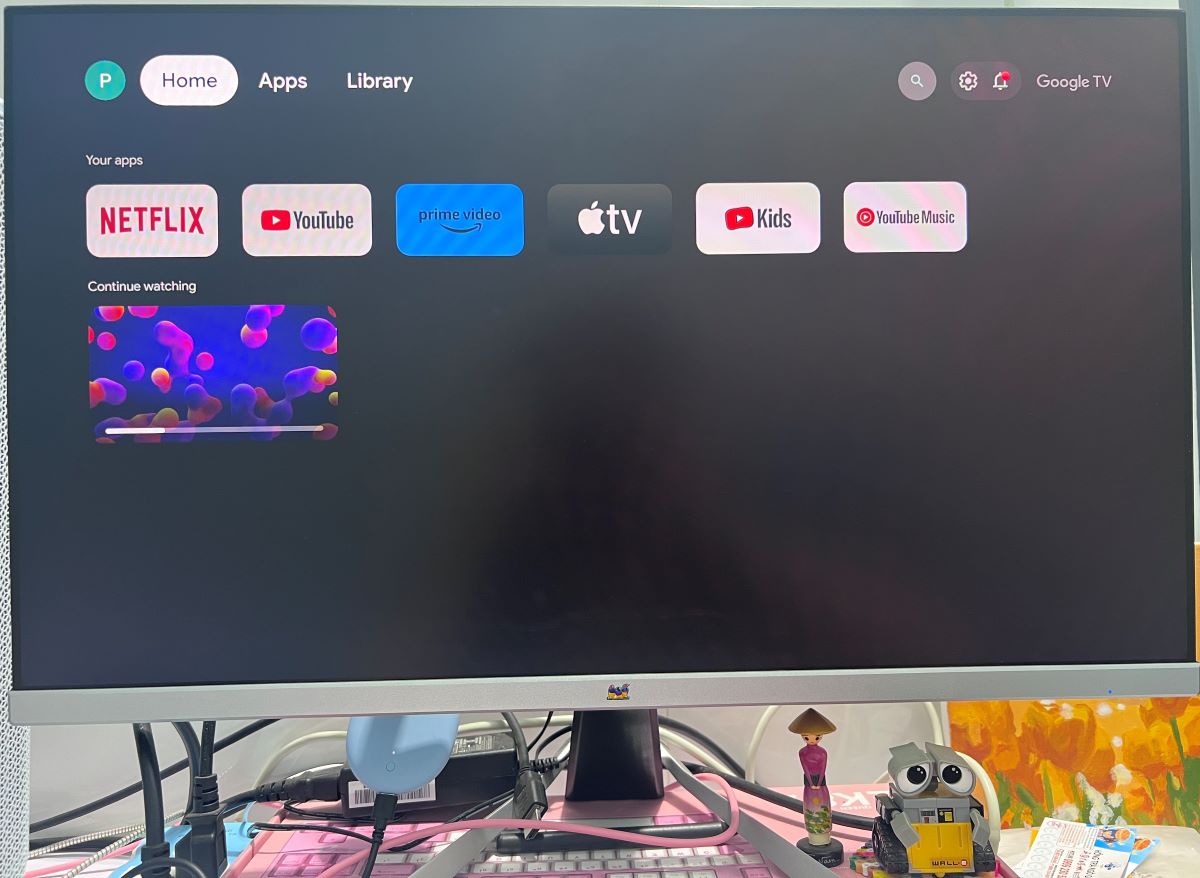
You can easily use Chromecast by plugging the device into any monitor, and it typically works excellently without any issues.
The main challenge, however, is figuring out how to output sound from the monitor.
To give you a clearer understanding, I have personally tested the Chromecast with Google TV on various monitors to try it out for you.
This includes experimenting with monitors that have built-in speakers and those without.
Monitor with Built-in Speakers
I have tested the Chromecast with my Viewsonic monitor with the built-in speakers.
While the speakers from the monitor work well.
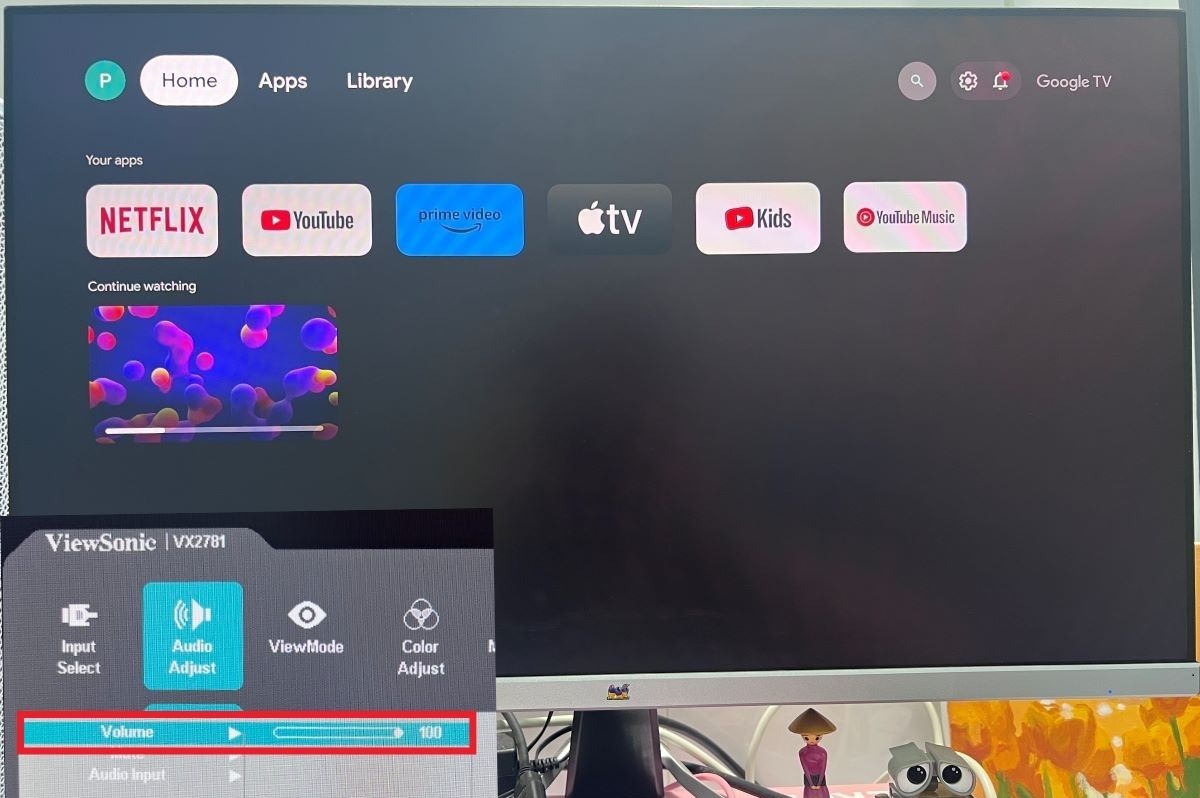
However, I felt that the sound quality didn’t quite meet my expectations for enjoying movies on Netflix or Disney+.
To improve this, I connected the Chromecast to external Bluetooth speakers and earphones, which significantly enhanced the audio experience.
This approach proved effective not just for the Viewsonic monitor but also for monitors without built-in speakers.
Read on for more detailed insights in the next section.
Monitor without Built-in Speakers
Using a Chromecast with monitors that lack built-in speakers presents a challenge, as you’d have no audio for your movies.
The best way to get sound output from the Chromecast when using a monitor without built-in speakers is to pair it with a Bluetooth speaker, soundbar, or earphones.
Tai “Ty” Luu, an Electronics Engineering graduate from Sheridan College, is a passionate technical editor with a deep love for technology and gaming. He constantly seeks new challenges to expand his expertise in the tech and gaming fields.



